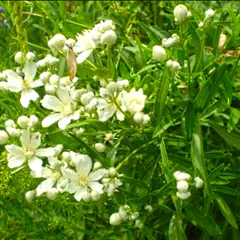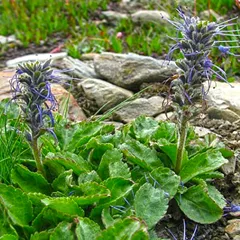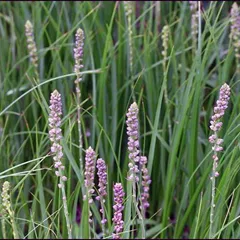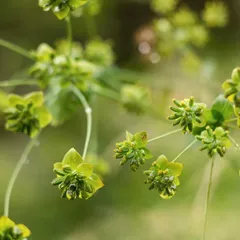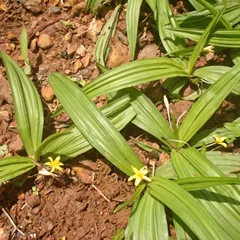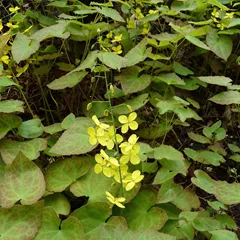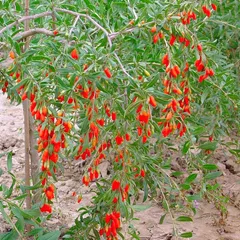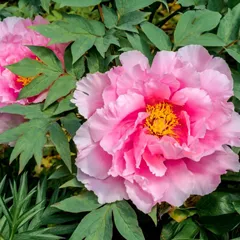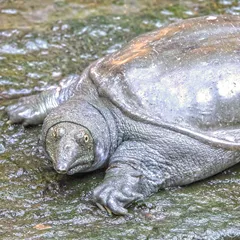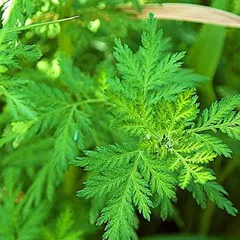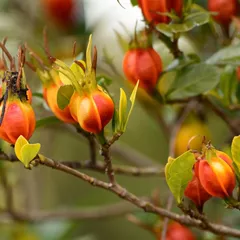Qin Jiao Bie Jia San
Qin Jiao Bie Jia San
Chinese: 秦艽鳖甲散
Pinyin: Qín Jiāo Biē Jiǎ Sàn
Other names: Large Gentian and Soft -Shelled Turtle Shell Powder
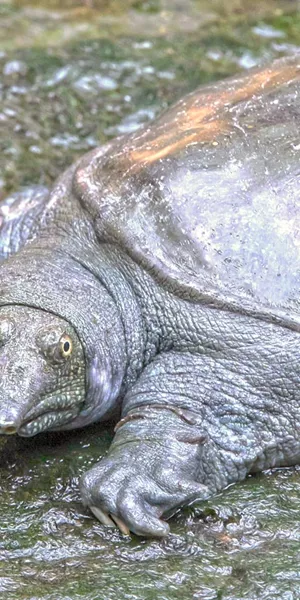
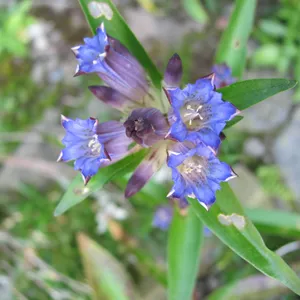
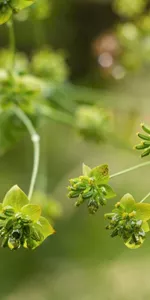
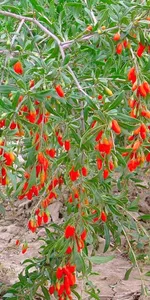
Qin Jiao Bie Jia San
Qin Jiao Bie Jia San
Chinese: 秦艽鳖甲散
Pinyin: Qín Jiāo Biē Jiǎ Sàn
Other names: Large Gentian and Soft -Shelled Turtle Shell Powder
Number of ingredients: 6 herbs
Formula category: Formulas that clear Heat from Deficiency
Conditions for which it may be prescribed: TuberculosisFevers of unkonw origin
- Enriches the Yin
- Nourishes the Blood
- Clears Heat
- Alleviates steaming bone disorder
Contraindications: Should not be used in cases of Wind obstructing the Exterior. It is... Should not be used in cases of Wind obstructing the Exterior. It is contraindicated where the Body Fluids are seriously exhausted, because the many acrid constituents in the formula may further aggravate such a condition. see more
Source date: Yuan dynasty
Source book: Precious Mirror of Health
The information provided here is not a replacement for a doctor. You shouldn't use it for the purpose of self-diagnosing or self-medicating but rather so you can have a more informed discussion with a professional TCM practitioner.
Qin Jiao Bie Jia San is a 6-ingredient Chinese Medicine formula with Softshell Turtle Shells (Bie Jia) and Gentian Roots (Qin Jiao) as principal ingredients.
Invented in Yuan dynasty, it belongs to the category of formulas that clear Heat from Deficiency. Its main actions are: 1) enriches the Yin and 2) Nourishes the Blood.
In Chinese Medicine health conditions are thought to arise due to "disharmonies" in the body as a system. These disharmonies are called "patterns" and the very purpose of herbal formulas is to fight them in order to restore the body's harmony.
In this case Qin Jiao Bie Jia San is used by TCM practitioners to fight patterns like Full Heat Yin Deficiency. From a Western Medicine standpoint, such patterns can give rise to a range of conditions such as tuberculosis or fevers of unkonw origin for instance.
On this page, after a detailed description of each of the six ingredients in Qin Jiao Bie Jia San, we review the patterns and conditions that Qin Jiao Bie Jia San helps treat.
The six ingredients in Qin Jiao Bie Jia San
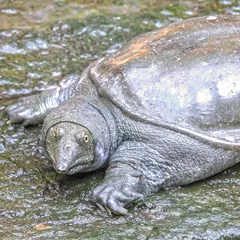
Bie Jia is a king ingredient in Qin Jiao Bie Jia San. Like the name indicates, it means it has more power than other ingredients in the formula.
1. Softshell Turtle Shells (Bie Jia)
Part used: Carapace
Nature: Neutral
Taste(s): Salty
Meridian affinity: KidneyLiver
Category: Tonic herbs for Yin Deficiency
Bie Jia clears Heat while enriching the Yin as well as dispels Wind while supporting the normal Qi. It enters the collaterals and bones to nourish the Yin while focusing the action of Gentian root (qin jiao) on the Interior.
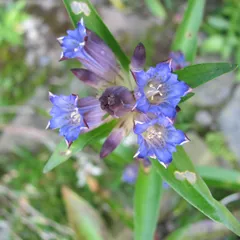
Qin Jiao is a king ingredient in Qin Jiao Bie Jia San. Like the name indicates, it means it has more power than other ingredients in the formula.
2. Gentian Roots (Qin Jiao)
Part used: Dried root
Nature: Cool
Meridian affinity: GallbladderStomachLiver
Category: Herbs that dispel Wind and Dampness
Qin Jiao is acrid and bitter. It treats Wind, no matter it is old or new. It clears Heat while enriching the Yin and dispels Wind while supporting the normal Qi. It also enters into the vessels as well as the collaterals and opens up areas of clumps in the Interior and Exterior.
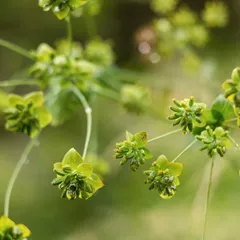
Chai Hu is a deputy ingredient in Qin Jiao Bie Jia San. This means it helps the king ingredient(s) treat the main pattern or it serves to treat a coexisting pattern.
3. Bupleurum Roots (Chai Hu)
Chai Hu clears Heat from Yin Deficiency and open the Qi dynamic. It eliminates Deficiency consumption irritability and Heat by releasing and dispersing Heat in the muscle layer".
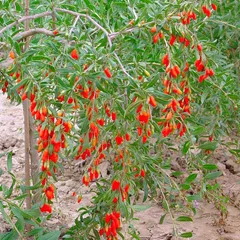
Di Gu Pi is a deputy ingredient in Qin Jiao Bie Jia San. This means it helps the king ingredient(s) treat the main pattern or it serves to treat a coexisting pattern.
4. Goji Tree Root Bark (Di Gu Pi)
Part used: Dried root bark
Nature: Cold
Taste(s): Sweet
Meridian affinity: KidneyLiverLung
Category: Herbs that cool the Blood
Di Gu Pi clears Heat from Yin Deficiency and open the Qi dynamic. It clears Heat from with in the bones and to drain Fire from the Lungs.
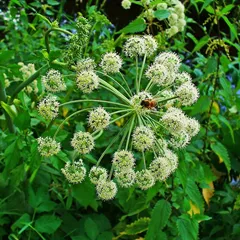
Dang Gui is an assistant ingredient in Qin Jiao Bie Jia San. This means that it either serves to reinforces the effect of other ingredients or it moderates their toxicity.
5. Dong Quai (Dang Gui)
Part used: Dried root
Nature: Warm
Meridian affinity: HeartLiverSpleen
Category: Tonic herbs for Blood Deficiency
In general Dang Gui's main actions are as follows: "Tonifies the Blood. Lubricates the Intestines. Relieve constipation. Promotes circulation and dispels Bi Pain. Reduce Dysmenorrhea and help with irregular menstruation."
In the context of Qin Jiao Bie Jia San, it is used because it nourishes and harmonizes the Blood. .
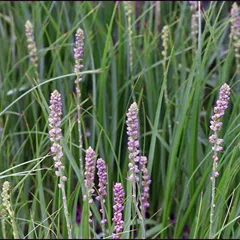
Zhi Mu is an assistant ingredient in Qin Jiao Bie Jia San. This means that it either serves to reinforces the effect of other ingredients or it moderates their toxicity.
6. Anemarrhena Rhizomes (Zhi Mu)
Part used: Dried rhizome
Nature: Cold
Meridian affinity: KidneyLungStomach
Category: Herbs that clear Heat and purge Fire and/or clear Summer Heat
In general Zhi Mu's main actions are as follows: "Clears Heat and Fire from the Qi level. Clears Heat and Fire from the Lung and Stomach. Clears Heat and tonifies the Yin."
In the context of Qin Jiao Bie Jia San, it is used because it drains Heat and enriches the Yin. .
Qin Jiao Bie Jia San is used to treat Full Heat Yin Deficiency
It's important to remember that herbal formulas are meant to treat patterns, not "diseases" as understood in Western Medicine. According to Chinese Medicine patterns, which are disruptions to the body as a system, are the underlying root cause for diseases and conditions.
As such Qin Jiao Bie Jia San is mostly used to treat the pattern "Full Heat Yin Deficiency" which we describe below.
But before we delve into Full Heat Yin Deficiency here is an overview of the Western conditions it is commonly associated with:
Tuberculosis Fevers of unkonw origin
Again it wouldn't be correct to say "Qin Jiao Bie Jia San treats tuberculosis" for instance. Rather, Qin Jiao Bie Jia San is used to treat Full Heat Yin Deficiency, which is sometimes the root cause behind tuberculosis.
Now let's look at Full Heat Yin Deficiency, a pattern that TCM practitioners commonly treat with Qin Jiao Bie Jia San.

'Heat' as a body pattern in Chinese Medicine is one of the so-called "Eight Principles". Learn more about Heat pattern in Chinese Medicine
Full Heat Yin Deficiency
Pulse type(s): Fine (Xi), Rapid (Shu)
Tongue coating: Complete absence of coating
Tongue color: Red
Symptoms: No sweat Fever at night Emaciation with no loss of appetite
Qin Jiao Bie Jia San is sometimes prescribed by TCM practitioners to treat Full Heat Yin Deficiency. This pattern leads to symptoms such as fever at night, no sweat and emaciation with no loss of appetite. Patients with Full Heat Yin Deficiency typically exhibit fine (Xi) or rapid (Shu) pulses as well as a red tongue with complete absence of coating.
This pattern is characterized by Heat accumulating in the body's Yin (cooling) aspects, often during the later stages of a warm-heat pathogen disease. This condition arises when prolonged exposure to Heat pathogens depletes the body's Yin and Body Fluids.
Key manifestations include night fevers... read more about Full Heat Yin Deficiency
Formulas similar to Qin Jiao Bie Jia San
Qing Gu San is 50% similar to Qin Jiao Bie Jia San
Xiao Yao San is 33% similar to Qin Jiao Bie Jia San
Er Xian Tang is 33% similar to Qin Jiao Bie Jia San
Di Gu Pi Yin is 33% similar to Qin Jiao Bie Jia San
Qing Hao Bie Jia Tang is 33% similar to Qin Jiao Bie Jia San
Dan Zhi Xiao Yao San is 25% similar to Qin Jiao Bie Jia San

